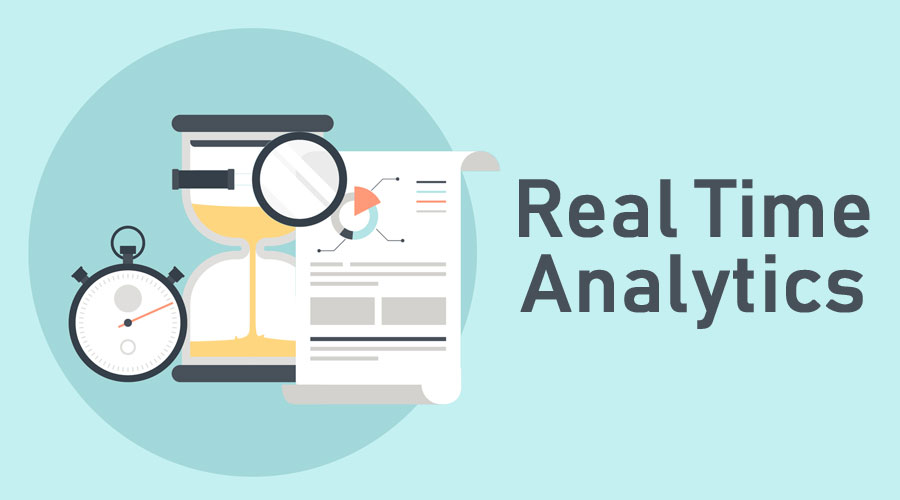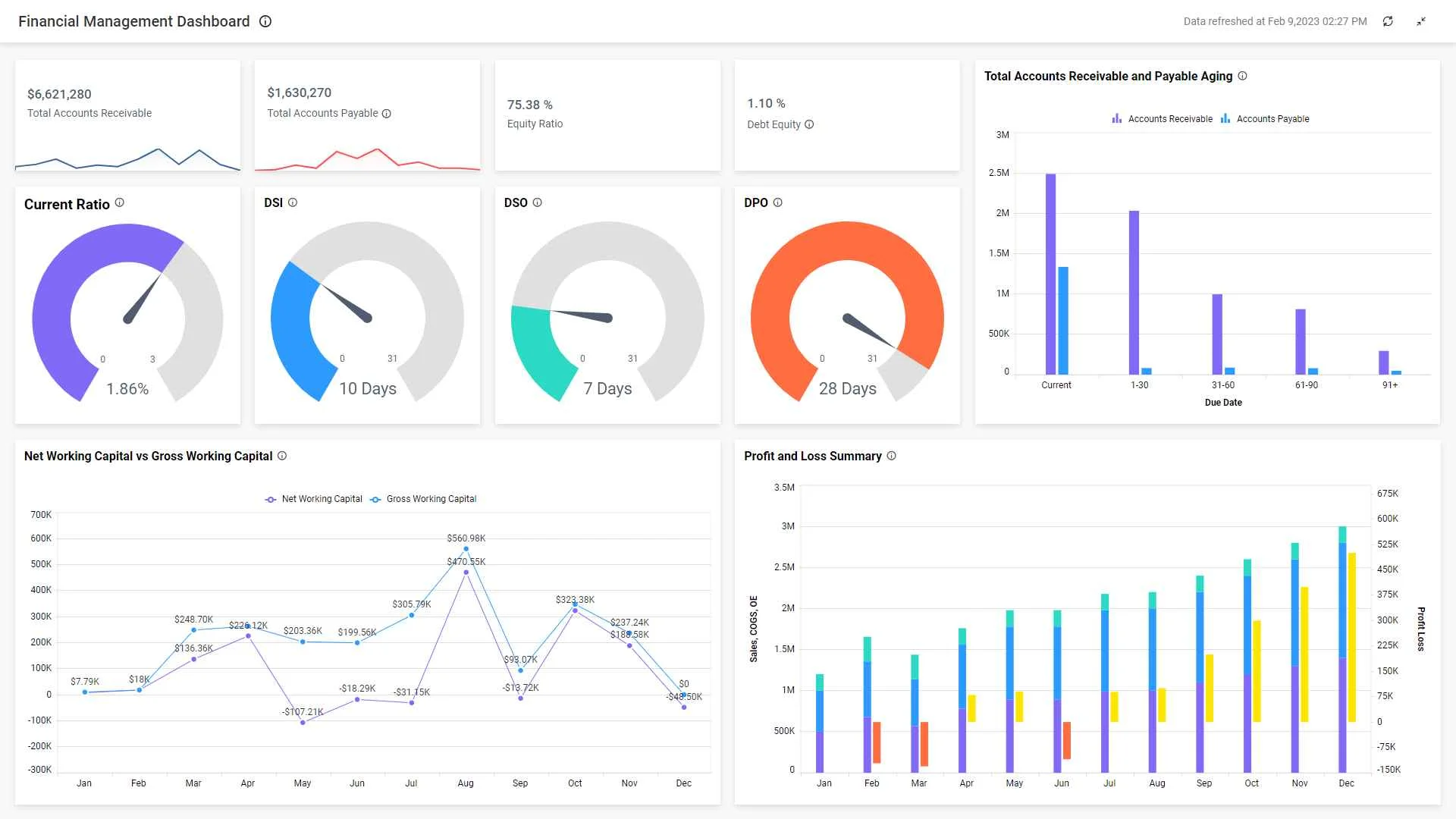P1]
In today’s hyper-competitive business landscape, data is the lifeblood of success. However, raw data alone is insufficient. To truly leverage its potential, businesses need to transform data into actionable insights, and the faster they can do this, the greater their competitive advantage. This is where real-time analytics comes into play.
Real-time analytics, as the name suggests, involves the immediate analysis of data as it is generated. This allows organizations to identify trends, anomalies, and opportunities as they emerge, enabling them to make informed decisions and take immediate action. Unlike traditional batch processing, which involves analyzing data in large chunks after a significant delay, real-time analytics provides a continuous, up-to-the-minute view of the business.
The Evolution from Batch to Real-Time
Historically, data analysis was a slow and cumbersome process. Data would be collected over a period of time, then loaded into a data warehouse or data lake for processing. The analysis would be performed overnight or over several days, and the results would be available only after a considerable delay. This approach, known as batch processing, was adequate for certain types of analysis, such as generating monthly sales reports.
However, batch processing is ill-suited for applications that require immediate insights. Consider a fraud detection system. If the system relies on batch processing, fraudulent transactions might be detected only after they have already occurred, resulting in significant financial losses. Similarly, in e-commerce, delayed analysis of website traffic could lead to missed opportunities to optimize product recommendations or pricing.
The advent of powerful computing infrastructure, including cloud computing, distributed processing frameworks like Apache Spark and Apache Kafka, and in-memory databases, has made real-time analytics a viable and increasingly essential option for businesses of all sizes.
Key Components of a Real-Time Analytics System
Building a robust real-time analytics system requires careful consideration of several key components:

Data Sources: The system needs to ingest data from various sources, including sensors, web servers, mobile apps, social media feeds, transactional databases, and IoT devices. These data sources can generate a high volume and velocity of data, often in diverse formats.
Data Ingestion and Processing: The data ingestion process must be able to handle the influx of data from multiple sources in real-time. Technologies like Apache Kafka, Apache Flume, and Amazon Kinesis are commonly used to stream data into the system. Once ingested, the data needs to be processed and transformed. This involves cleaning, filtering, and aggregating the data to prepare it for analysis.
Data Storage: Real-time analytics systems often rely on in-memory databases or NoSQL databases to store and query data with low latency. In-memory databases like Redis and Memcached store data in RAM, enabling extremely fast read and write operations. NoSQL databases like Cassandra and MongoDB are designed to handle large volumes of unstructured or semi-structured data and provide scalability and fault tolerance.
Analytics Engine: The analytics engine is responsible for performing the actual analysis of the data. This can involve a variety of techniques, including statistical analysis, machine learning, and complex event processing. Frameworks like Apache Spark Streaming and Apache Flink are commonly used for real-time analytics.

Visualization and Reporting: The insights generated by the analytics engine need to be presented in a clear and concise manner. This can be done through dashboards, reports, and alerts. Visualization tools like Tableau, Power BI, and Grafana can be used to create interactive dashboards that provide real-time visibility into key performance indicators (KPIs).

Benefits of Real-Time Analytics
The benefits of real-time analytics are numerous and far-reaching:
Improved Decision-Making: Real-time insights enable businesses to make faster, more informed decisions. By having access to up-to-the-minute data, decision-makers can respond quickly to changing market conditions and customer needs.
Enhanced Customer Experience: Real-time analytics can be used to personalize the customer experience and improve customer satisfaction. For example, by analyzing website browsing behavior in real-time, businesses can provide personalized product recommendations and offers.
Fraud Detection: Real-time analytics is essential for detecting and preventing fraud. By monitoring transactions in real-time, businesses can identify suspicious activity and take immediate action to prevent fraudulent transactions.
Operational Efficiency: Real-time analytics can be used to optimize operational efficiency. For example, by monitoring sensor data from manufacturing equipment in real-time, businesses can identify potential equipment failures and take proactive maintenance measures.
Risk Management: Real-time analytics can help businesses manage risk more effectively. By monitoring key risk indicators in real-time, businesses can identify potential risks and take steps to mitigate them.
Use Cases of Real-Time Analytics
Real-time analytics is being used in a wide range of industries and applications:
E-commerce: Optimizing product recommendations, detecting fraudulent transactions, personalizing marketing campaigns.
Financial Services: Detecting fraudulent transactions, monitoring market risk, providing personalized financial advice.
Healthcare: Monitoring patient vital signs, detecting disease outbreaks, optimizing hospital operations.
Manufacturing: Monitoring equipment performance, predicting equipment failures, optimizing production processes.
Transportation: Optimizing traffic flow, managing logistics, improving safety.
Gaming: Personalizing game experiences, detecting cheating, optimizing game performance.
Social Media: Analyzing social media trends, identifying influencers, detecting spam.
Challenges of Implementing Real-Time Analytics
While the benefits of real-time analytics are significant, implementing a real-time analytics system can be challenging:
Data Volume and Velocity: Real-time analytics systems need to be able to handle a high volume and velocity of data. This requires a scalable and robust infrastructure.
Data Complexity: Real-time data can be complex and unstructured. This requires sophisticated data processing and transformation techniques.
Latency Requirements: Real-time analytics systems need to provide low-latency responses. This requires optimized data storage and analytics engines.
Security: Real-time data needs to be protected from unauthorized access and modification. This requires robust security measures.
Cost: Implementing and maintaining a real-time analytics system can be expensive.
Overcoming the Challenges
Several strategies can be used to overcome the challenges of implementing real-time analytics:
Cloud Computing: Cloud computing provides a scalable and cost-effective infrastructure for real-time analytics.
Open-Source Technologies: Open-source technologies like Apache Spark, Apache Kafka, and Apache Flink provide powerful and flexible tools for real-time data processing and analysis.
Data Governance: Implementing a robust data governance framework can help ensure the quality and security of real-time data.
Expertise: Building a successful real-time analytics system requires expertise in data engineering, data science, and software development.
The Future of Real-Time Analytics
Real-time analytics is poised to become even more important in the future. As the volume and velocity of data continue to increase, businesses will need to rely on real-time analytics to make timely and informed decisions. The convergence of real-time analytics with other technologies, such as artificial intelligence and machine learning, will further enhance its capabilities and applications. We can expect to see more sophisticated real-time analytics solutions that can automatically detect anomalies, predict future events, and recommend optimal actions.
FAQ
Q: What’s the difference between real-time analytics and business intelligence (BI)?
A: BI typically focuses on historical data and provides insights into past performance. Real-time analytics focuses on current data and provides immediate insights for making decisions in the moment. Think of BI as looking in the rearview mirror, while real-time analytics is looking out the windshield.
Q: Is real-time analytics only for large enterprises?
A: No. While large enterprises often have the most complex data needs, real-time analytics can benefit businesses of all sizes. Cloud-based solutions and open-source technologies have made it more accessible and affordable for smaller companies to implement real-time analytics.
Q: What skills are needed to work with real-time analytics?
A: Key skills include data engineering (data ingestion, transformation, storage), data science (statistical analysis, machine learning), and software development (programming, system architecture). Familiarity with technologies like Apache Spark, Apache Kafka, and cloud platforms is also important.
Q: How can I get started with real-time analytics?
A: Start by identifying specific business problems that could be solved with real-time data. Then, explore cloud-based real-time analytics platforms or open-source technologies. Consider starting with a pilot project to test and refine your approach.
Q: Is real-time analytics the same as streaming analytics?
A: The terms are often used interchangeably. Streaming analytics is a type of real-time analytics that specifically focuses on analyzing data streams as they arrive.
Conclusion
Real-time analytics is no longer a luxury but a necessity for businesses that want to stay ahead of the curve. By providing immediate insights into data, real-time analytics enables organizations to make faster, more informed decisions, improve customer experiences, detect fraud, optimize operations, and manage risk more effectively. While implementing a real-time analytics system can be challenging, the benefits are well worth the investment. As technology continues to evolve, real-time analytics will become even more powerful and pervasive, transforming the way businesses operate and compete. By embracing real-time analytics, businesses can unlock the full potential of their data and gain a significant competitive advantage in the digital age.


Leave a Reply